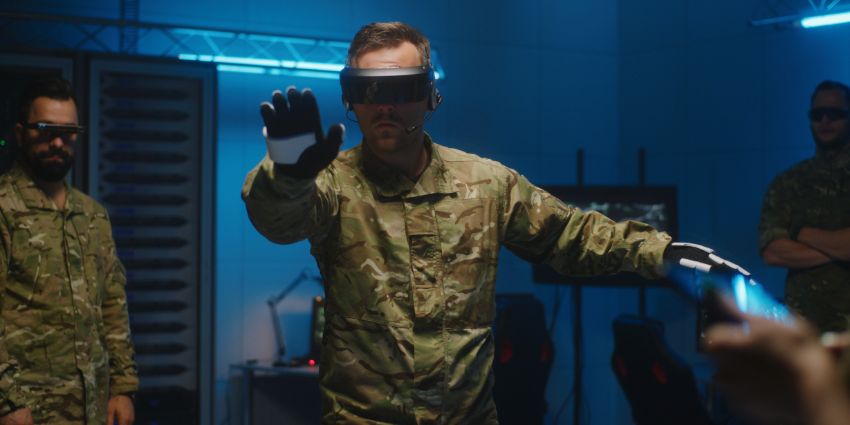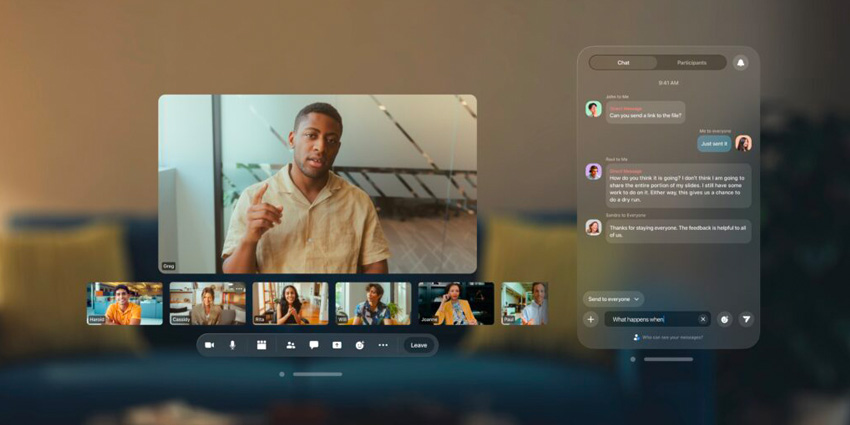In recent years, extended reality (XR) technology has become increasingly commonplace in the professional landscape. Once considered a tool specifically for the consumer landscape, XR has proven itself as a valuable resource for training, collaboration, and product development.
For the armed forces, experts now believe the right tools could be a fundamental part of how we train and empower future troops. Not only could these solutions strengthen training initiatives, by safely exposing specialists to hands-on educational experiences, but they could also provide specialists with more of the information they need to address complex scenarios on the field.
However, to leverage the full benefits XR has to offer, government groups first need to be able to access tools specifically built for the challenges the armed forces face. Microsoft announced its intention to build dedicated army headsets in 2022, but the project has faced several issues in the last year, leading to delays and setbacks.
Here’s where the Microsoft IVAS Army headset stands today.
Introducing the Microsoft IVAS Headsets
In September 2022, the United States Army received its first order of bespoke Integrated Visual Augmented System headsets (IVAS) from Microsoft. Following various successful field tests, the Assistant Secretary for Acquisition said the army had been cleared to start accepting and using the models.
According to various reports, these headsets were expected to release in 2022. However, the devices were declared “not combat ready” due to various issues with moisture protection, and calibration issues. Despite this, armed forces leaders maintained a positive view of the impending headsets.
The devices are set to cost the army around $21.88 billion over a ten year period, which would introduce 120,000 units, as well as services and spare parts to army professionals. The first order was accepted at the end of 2022, and included headsets designed to support numerous professionals, from low-level infantry soldiers to fighter pilots.
These headsets, built on the foundations of the leading Microsoft HoloLens 2 mixed reality (MR) devices are intended to provide specialists with thermal and night vision when in the field. The tools also provide tactical edge computing components, passive targeting, and situational awareness solutions, alongside Microsoft Azure cloud computing capabilities.
The first batch has been dedicated to units operating field training, garrison, and combat deployments. Following the successful use of these tools, the army plans on developing a second version of the headset, in parallel to the first solution, which will include additional features, like a low-light sensor.
Issues Facing the Army IVAS Headsets
Aside from being deemed “not combat ready” in initial tests, the Microsoft IVAS headsets have also encountered a range of other issues in the last year. In August 2022, the US senate announced it would be reducing the funding available to the army to access these new devices.
The subcommittee said it was concerned that the IVAS solution, at the time, was still facing hardware, software, and user-acceptance challenges not fully addressed by the Army. However, it also added that it had approved the US Army’s choice to extend testing for an additional ten months.
The additional testing aims to address some of the core problems faced by the devices in initial deployments. Already, the IVAS system has received more than 80,000 hours of field testing, and the Army has announced it is fully committed to continuing to work with Microsoft on the project. However, the government groups also say they’re being cautious with their XR approach, and don’t want to roll the devices out to troops until they’re sure they’re fully ready.
What’s Happening in 2023?
Following the various technical difficulties and delays experienced by the Army over the last year, government officials finally announced in December 2023, that soldiers in operational and training units will begin to receive some of the mixed reality goggles to use in everyday scenarios.
Though it’s uncertain how quickly these devices will be delivered to troops, the Army does intend to start doubling-down on implementation of these solutions. Currently the headsets are said to deliver greater situational awareness to experts, with a combination of augmented tools for training and missions, as well as valuable heads-up display components.
At this stage, the system has undergone around 3 years of testing overall, but the initial trial period is far from over. At present, the Army is delivering 5,000 IVAS 1.0 versions, and 5,000 IVAS 1.1 version tools to troops across undisclosed training and operational units this year, with the intention to further enhance the technology in the future.
Although the roll out intended this year has been delayed significantly, experts suggest the disruptions have been necessary. Specifically, the Army wanted to ensure the night vision quality offered by the headsets was strong enough to enable today’s troops. Additionally, they wanted to ensure their teams were capable of leveraging the full benefits mixed reality has to offer.
Already, Microsoft has been tasked with the challenge of creating the next generation version of the technology (version 1.2). This headset will include new form factors and software improvements, based on the findings and feedback gathered during the initial rollouts.
Looking Ahead: What’s Next for the Army IVAS?
According to Scott Evans, Microsoft’s Vice President of MR, the focus will now be on making significant changes to the current device, capable of delivering a higher return on investment. The enhancements made to the next version of the Army IVAS are also likely to be influenced by the creation of potential next-generation HoloLens headset.
Although Microsoft has not yet announced a release date for the HoloLens 3 system, the firm is currently working on making improvements to all of the basic hardware elements of the system, including sensors, battery capacity, tracking, and display systems. If the underlying HoloLens technology is enhanced, there’s a good chance this will influence the design of future IVAS solutions for the army too.







